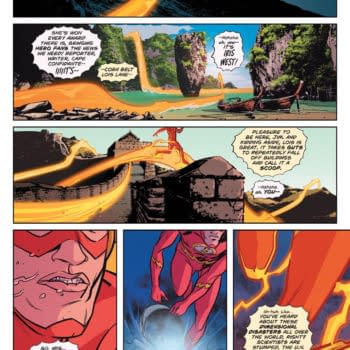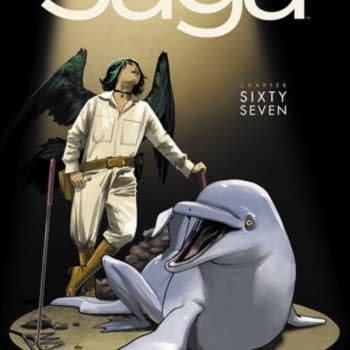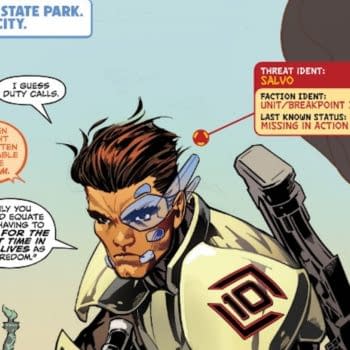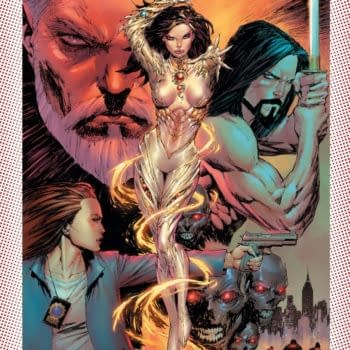Posted in: Comics, Recent Updates | Tagged: american vampire, Comics, entertainment, Rafael Albuquerque, scott snyder, vertigo
American Vampire #6 & #7 Go Viral
"Please don't turn our heroes into villains" said no one ever, or at least not recently. This seems to be the current age of treachery, transformation, and even a hero's own fear of becoming something they don't want to be. And who is becoming more known for that exploration than Scott Snyder? That's not all he writes about, to be sure, but Batman's journey in Death of the Family is perhaps the biggest example in recent comics of a major hero afraid of becoming what he fears the most. Then we have the very successful horror comic Wytches, also written by Snyder, where it looks like Charlie Rooks is going to have to become increasingly monstrous to stand a chance at defeating monsters and save his daughter. But to my surprise, it's actually been in the pages of American Vampire's Second Cycle, written by Snyder and illustrated painstakingly in painterly style by Rafael Albuquerque, that I find the biggest example of this theme in the past couple of issues.

Issue #6, part one of "Dark Moon", contains one of my favorite spreads in recent issues, or even in recent comics, to be fair:

But for the true implications of all this explanation and revelation in Issue #6, we have to wait for Issue #7, which arrived this week in shops. And then we might kick ourselves a little for not seeing it all coming. Pearl and Skinner have encountered the Gray Trader. They've come into the zone of the infection. How could they possibly resist its influence? Skinner, who we've followed across the decades, is in great danger, and only by seeing his example do we really understand: it doesn't take much to be infected by evil. All you have to do is just get that tiny bit too close and have even the most minimal contact. And then? You are part of what could destroy the world. In that instant everything reverses for you and all your friends become your enemies (with some justifiable reasons), and everything you've fought for might just become a totally wasted, or at best ironic, epilogue to your fate.
Congratulations to Scott Snyder and Rafael Albuquerque for plumbing the depths of earliest civilization to bring us a study in the nature of evil in Issues #6 and #7 and bring us in so close to observe where things are headed for Skinner. It's time to find out exactly how fine a line exists between good and evil for American Vampire.
















